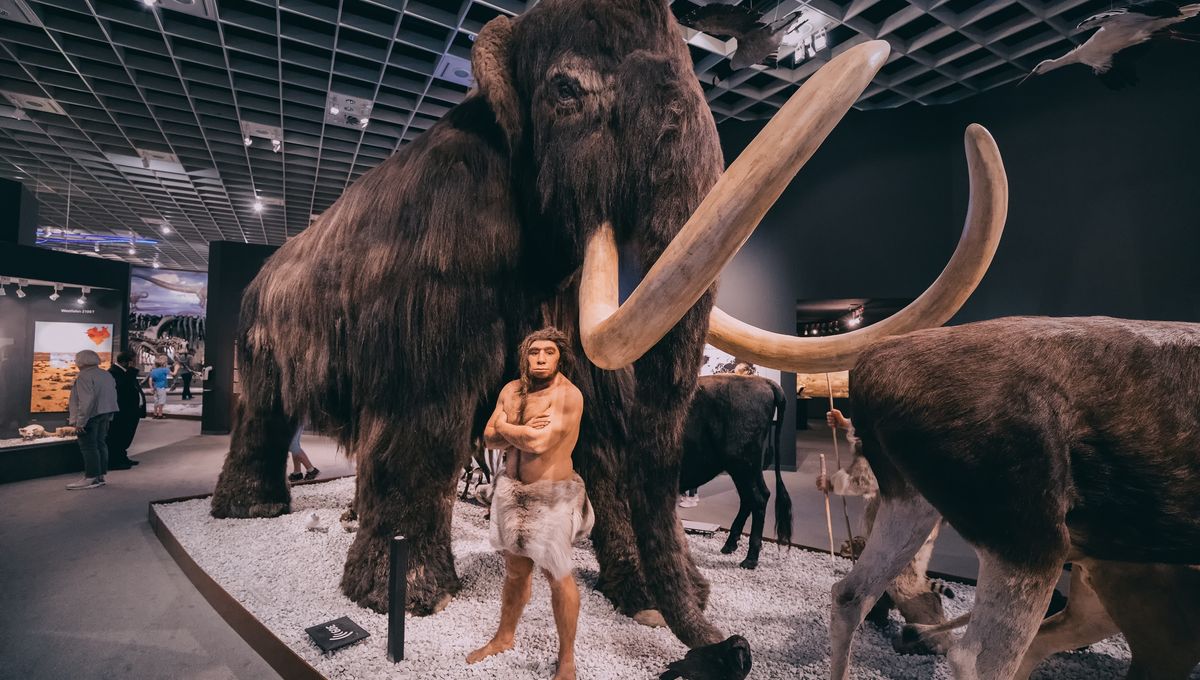
Being stocky can have its advantages, especially when it comes to hunting prehistoric game. According to a new reconstruction of the Neanderthal ribcage, our extinct relatives may have been considerably chunkier in this area than we are, with this extra bulk potentially providing the devastating power they needed to ambush and overcome their prey.
Researchers studying ancient hominids often analyze the thorax (or upper torso) to learn about the respiratory needs of different species, thus providing vital clues as to how they lived. Modern humans, for instance, typically have a “barrel-shaped” ribcage, which would have been ideal for the thoracic breathing needed to support endurance running as our ancestors chased their prey over large distances.
Neanderthals, meanwhile, are thought to have typically possessed wider, “bell-shaped” ribcages, thus giving them a thicker-set body plan. This stumpy frame is theorized to have allowed for a larger respiratory system, which may have been suitable for different hunting strategies involving shorter yet more intense bursts of energy.
Researchers also think Neanderthals’ roomier lower thoraces may have helped them to retain their body heat – a vital adaptation to their frosty Eurasian habitat during the Ice Age.
However, because ribs are small and fragile, most ancient skeletons lack an intact ribcage, making it difficult for scientists to deduce the shape of the Neanderthal torso. To date, the most detailed reconstruction of the Neanderthal ribcage comes from a specimen called Kerbara 2, which lived around 60,000 years ago in what is now Israel.
While Kerbara 2 does appear to possess the hypothesized bell-shaped ribcage, the authors of a new study sought to build on this finding by creating a 3D model of the ribcage of another Neanderthal. Known as Shanidar 3, this individual lived some 45,000 years ago in Iraq, before being buried in the world-famous Shanidar Cave – home to the controversial “flower burials”.
Like Kerbara 2, Shanidar 3 was also found to have a bell-shaped ribcage. When this model was then compared to 58 adult male Homo sapiens ribcages from around the world, the study authors found that the two Neanderthals strongly resembled ancient modern humans who lived in chilly environments but differed from more recent individuals or those who inhabited warmer climes.
This finding suggests that a stockier, bell-shaped thorax was a common feature among ancient cold-adapted humans, supporting the idea that thickset bodies may have aided survival in freezing environments.
Moreover, the model indicates that Neanderthals potentially had larger diaphragms than modern humans. According to the study authors, this increased diaphragmatic action “would allow greater oxygen supply, leading to higher activity rates that would tentatively be suitable to ambush hunting strategies where explosive strength is required, rather than the endurance proposed for H. sapiens hunter-gatherers.”
So while they might not have been the best at chasing, Neanderthals probably benefitted from immense power, which they weaponized in order to hunt lions, cave bears, and colossal prehistoric elephants,
The study is published in the Journal of Human Evolution.
Source Link: Neanderthals May Have Had “Explosive Strength” Thanks To Their "Bell-Shaped" Ribcages